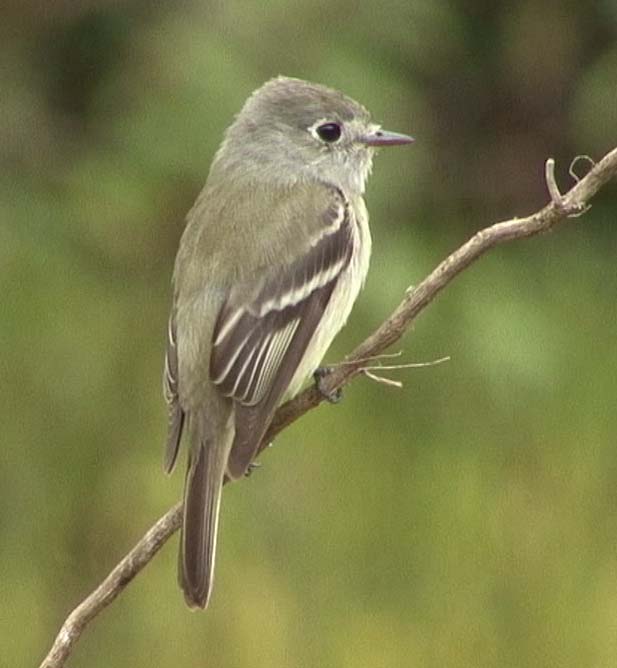
Empidonax hammondii
SUBFAMILY
Fluvicolinae
TAXONOMY
Empidonax hammondii Xantus, 1858. Monotypic.
OTHER COMMON NAMES
French: Moucherolle de Hammond; German: Tannentyrann;
Spanish: Mosqueta de Hammond.
PHYSICAL CHARACTERISTICS
5.5 in (14 cm). Small bird with large head and short tail.
Plumage includes gray head, white eye ring, grayish olive back,
dark gray wings and tail, whitish wing bars, gray or olive tint
on the breast and sides, and belly washed with pale yellow. Bill
is narrow and short. Base of lower mandible is pale orange.
Keeps a fairly horizontal stance while perching.
DISTRIBUTION
Summer resident in southeastern Alaska, western Canada,
northwestern United States, and Rocky Mountains. Winters
throughout Latin America.
HABITAT
Inhabits wide range of forest types, but prefers coniferous forest
at higher elevations than other Empidonax flycatchers.
BEHAVIOR
Active bird, frequently flicking tail and wings while perched.
Can be silent for long periods; when vocal, call is a low, rapid
“sill-it!” or “chip-it!”, also a low, rough “greep!” or “pweet!”
Migratory.
FEEDING ECOLOGY AND DIET
Eats flying insects. Perches high to spot prey, hawks in midair,
and returns to same perch. Also gleans insects from foliage.
REPRODUCTIVE BIOLOGY
A shallow, cup-shaped nest is built by the female, who incubates
one clutch of three to four eggs once per year. Breeding
is monogamous.
CONSERVATION STATUS
Not threatened. habitat vulnerable to deforestation of high-elevation
conifers.
SIGNIFICANCE TO HUMANS
None known.
Other popular Animals
Photo Gallery of - Hammond’s flycatcher
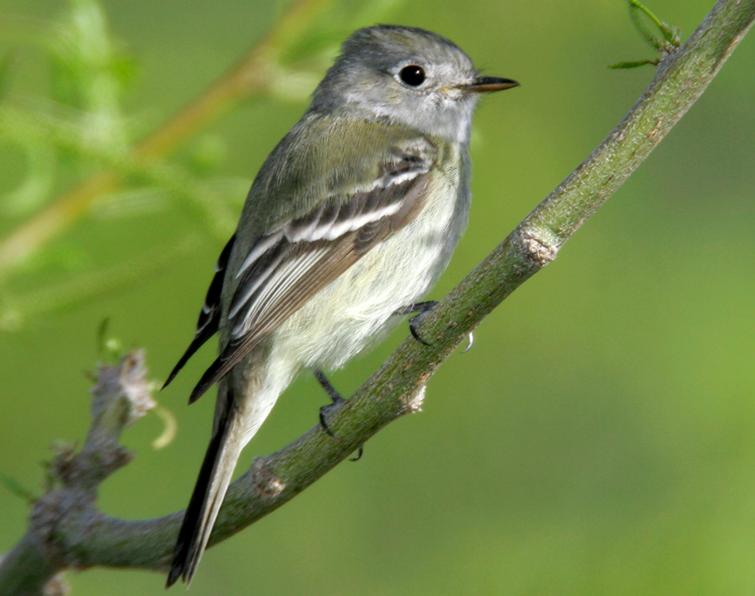
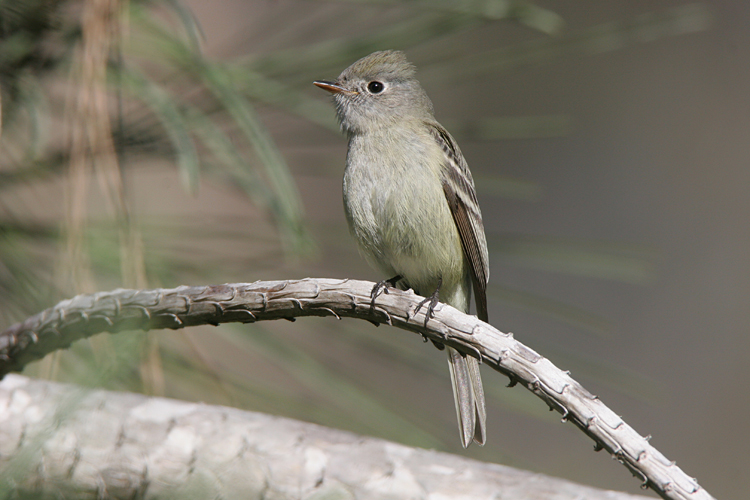
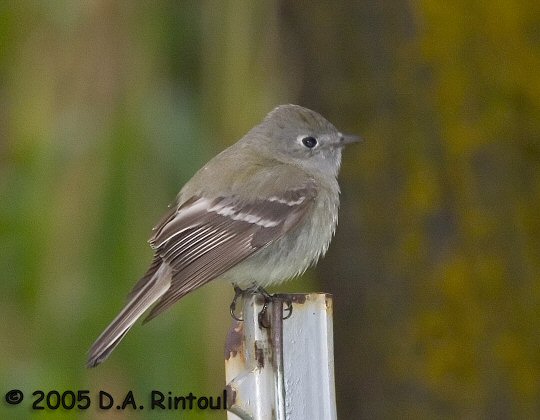
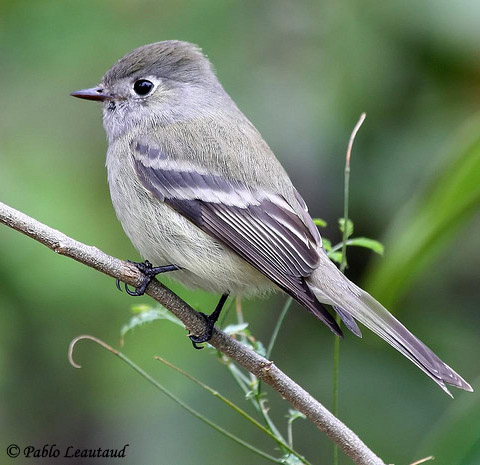
 Animalia Life
Animalia Life